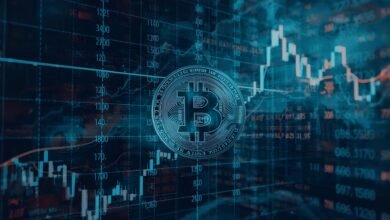
Crypto Synthetic Assets. Crypto synthetic assets are a type of blockchain-based financial instrument that attempts to mimic the value and behavior of real assets. One type of digital financial instrument is crypto synthetic assets, also called “synthetic assets.” These assets are designed to look and act like real-world assets like stocks, commodities, currencies, or other cryptocurrencies, but you don’t own any of them.
These digital assets are created in blockchain-based decentralized finance (DeFi) ecosystems using intricate financial derivatives and smart contracts. Important features of crypto synthetic assets include the capacity to build decentralized smart contracts on blockchain platforms like Ethereum, safeguard value with collateral, precisely track target asset prices, and develop flexible leveraged or derivative products.
DeFi customers are less likely to use traditional intermediaries because they have access to more financial markets and assets. Nevertheless, users should exercise caution because these instruments increase complexity and risk, requiring an in-depth understanding of how they function and how they impact investment plans.
Traditional vs. Crypto Synthetic Assets
Stocks, bonds, and commodities traded on reputable financial markets are examples of traditional assets. On the other hand, crypto synthetic assets are digital tokens that mimic traditional assets’ look, feel, and functionality through blockchain technology.
Crypto synthetic assets exist solely in digital form on blockchain networks, unlike traditional assets, which can be physically held or stored on paper. Certain risks and complications are associated with crypto synthetics, even though they are more accessible, liquid, and programmable than traditional assets.
Types of Crypto Synthetic Assets
Crypto synthetic assets can take a wide range of forms, including synthetic stablecoins, tokenized commodities and equities, leveraged and inverse tokens, yield-bearing synthetic assets, and synthetic fixed-income securities.
Synthetic stablecoins
The goal of digital tokens called synthetic stablecoins is to function similarly to fiat currencies like the USD or the EUR. Without the inherent risk of Bitcoin, they provide a means for consumers to transact goods and services and store value within the cryptocurrency ecosystem. Built on the Synthetix platform, USD is one example of a synthetic stablecoin. In theory, it should be able to supply people with digital currency that is pegged to the dollar in value.
Tokenized commodities and equities
As a digital counterpart to their physical counterparts, commodities and stocks that have been tokenized can be found on blockchain networks. Conventional assets can now be exchanged and owned in a decentralized fractional fashion thanks to these synthetic assets. sOIL, a synthetic asset that follows the price of crude oil, is also built on the Synthetix platform. Investors can become more vulnerable to price movements without actually holding any oil.
Leveraged and inverse tokens
Inverse tokens make money when the underlying asset’s value goes down, while leveraged tokens make gains or losses look even worse. These synthetic assets are created to either amplify or counterbalance the underlying asset’s price movements. As an example, BTC3L aims to generate daily returns three times greater than the price of Bitcoin (BTC). Assuming a 1% increase in Bitcoin, BTC3L should see a 3% increase.
Yield-bearing synthetic assets
The DeFi ecosystem offers a way to earn passive income via yield-bearing synthetic assets. These assets allow holders to stake or lend them out and receive returns. A synthetic asset that the Compound protocol created is code. One way to earn income on the Compound platform is to participate in lending activities with Dai (DAI) stablecoins. A yield-bearing synthetic asset is what cDAI is because it gives its holders interest over time.
Applications of Crypto Synthetic Assets
prospective consumers of crypto synthetic assets include market players interested in growing their earnings, investors diversifying their holdings, and DeFi specialists engaged in yield farming. All of these individuals are prospective crypto synthetic asset users.
Trading and investing opportunities
Crypto-fabricated assets offer numerous investment and trading options. They allow traders to use leverage, which means they are more vulnerable to market swings and could make more money (or lose more) than they would with more traditional trading strategies. In addition, investors can easily diversify their portfolios with synthetic assets, which cover a broad spectrum of underlying assets inside the crypto ecosystem, including commodities and stocks.
Yield farming and liquidity provision
By actively participating in liquidity provision and DeFi operations, users can receive rewards in the form of more synthetic assets or governance tokens through yield farming. This is possible for users who stake cryptographic synthetic assets in DeFi protocols. Synthetic assets greatly enhance liquidity pools and the total liquidity of DeFi platforms to facilitate efficient lending, borrowing, and trading within the DeFi ecosystem.
Risk management and hedging strategies
You may hedge your bets and control your risk effectively with synthetic assets. If the value of the underlying assets drops, traders and investors can effectively protect their portfolios with inverse synthetic assets. To further mitigate the effects of market volatility on asset values, synthetic stablecoins provide an alternative to decentralized traditional stablecoins.
DeFi’s Role in Synthetic Asset Development and Trading
Demystifying finance, DeFi disrupts traditional financial systems and increases global financial inclusion by letting users build, trade, and diversify their portfolios with synthetic assets. As a major participant in the creation and trading of synthetic assets, DeFi is essential to transforming the traditional financial landscape. By integrating smart contracts and blockchain technology, DeFi systems simplify the issuance, creation, and trading of synthetic assets, transforming our interaction with financial instruments.
To start, DeFi improves accessibility and productivity by eliminating middlemen. By collateralizing cryptocurrencies, users can create tokens that represent the value of equities, commodities, fiat currency, and other real-world assets.
Second, DeFi’s open and permissionless design fosters programmer experimentation with various synthetic asset designs and trading techniques, which in turn stimulates innovation. This invention has leveled the playing field regarding access to global markets by making a diverse range of assets available to customers at all times. Users can readily trade synthetic assets through the liquidity pools offered by DeFi systems. These methods boost yield farming by incentivizing users to contribute financially and actively to the ecosystem.
Advantages of Crypto Synthetic Assets
Diversification, leverage, DeFi involvement, liquidity augmentation, risk mitigation, and other benefits are all part of the crypto synthetic assets’ mosaic. Cryptographic synthetic assets can greatly benefit the digital financial field. Most importantly, they allow users to easily diversify their cryptocurrency portfolios across a wide range of assets, including conventional stocks, commodities, and currencies, which improves investment strategies and lowers overall risk.
Furthermore, these assets facilitate leverage, giving traders more exposure to asset prices’ ups and downs, which could lead to greater profits. An essential aspect of DeFi is that it lets users participate in liquidity provision and yield farming and rewards them for it.
In addition, synthetic assets are the backbone of liquidity pools, increasing the total liquidity of DeFi platforms. Liquidity is essential for efficient trading and lending, and synthetic assets supply this foundation. These materials inform buyers how to safeguard their assets from unpredictable price swings and play a crucial role in risk management.
Challenges and Risks Concerned with Crypto Synthetic Assets
Despite providing new possibilities and answers, synthetic assets are associated with risks and challenges. These include vulnerabilities in smart contracts, problems with liquidity, regulatory uncertainty, and Oracle-related issues.
It is important to seriously consider the many concerns raised by the potential usage of synthetic assets in the blockchain and cryptocurrency sectors. The potential for smart contract vulnerabilities or exploits, which might result in substantial losses, is a major concern. As an example of the dangers presented by these intricate financial instruments, consider the notorious DAO incident of 2016, where a flaw in the smart contract led to the theft of approximately $50 million worth of Ether (ETH).
Another concern is that some synthetic assets may not have as much market liquidity as their real-world equivalents. If this leads to price manipulation or slippage during trade, the overall stability of the market may be compromised.
Governments worldwide are still grappling with defining and controlling these novel financial products, which raises severe concerns about regulatory oversight. One illustration of the potential legal challenges that synthetic assets may face is the ongoing litigation and regulatory changes surrounding stablecoins such as Tether (USDT).
The last point is that smart contracts pose security problems when they rely too heavily on Oracle systems. For example, the usefulness and worth of artificial assets dependent on an Oracle could be jeopardized if the Oracle is corrupted and provides inaccurate data.








